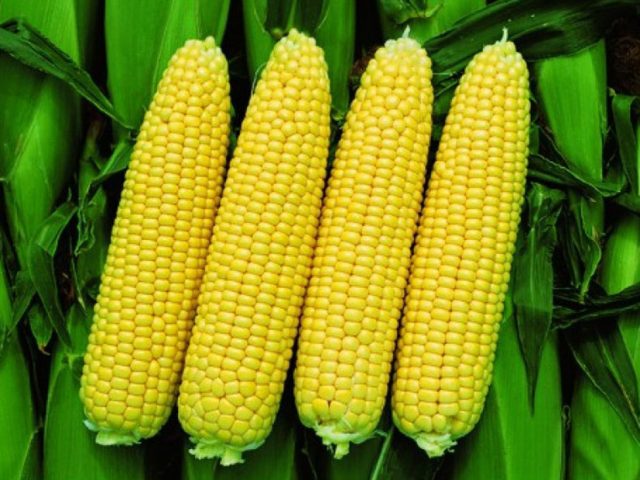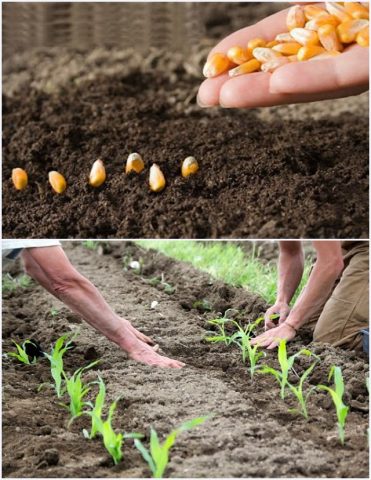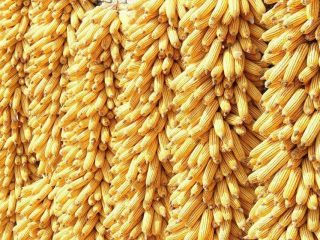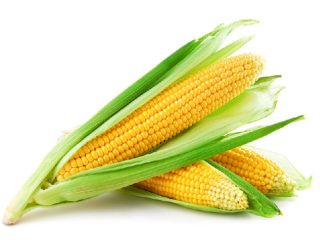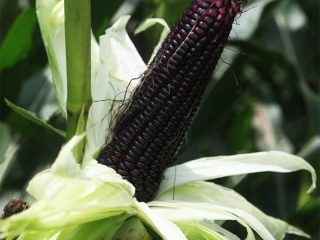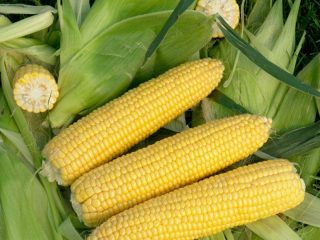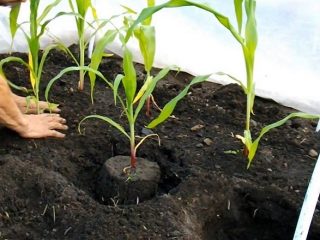Content
Of all the corn varieties, the most interesting for gardeners are those with sweet, juicy grains with thin, delicate skins. These hybrids belong to the sugar group. And the Bonduelle corn variety is the most popular and demanded among them. It is not difficult to grow it on the site, you just need to create optimal conditions for this.
Description of the Bonduelle corn variety
Corn is an annual, herbaceous plant that belongs to the family of cereals. It is grown for the sake of the ears, which are eaten by both humans and animals. People tend to prefer milk-ripened sugar corn kernels. The Bonduelle corn variety is heard by everyone.
They say that this sort does not exist and it is just a foreign brand. However, those seeds that are offered by horticultural farms under this name carry exactly those qualities for which Bonduelle corn is highly valued.
Distinctive features
Bonduelle corn variety is intended for fresh and canned consumption. In terms of nutritional value, this culture is comparable to vegetable beans. Possesses high consumer qualities, is widely demanded in the grocery market. Therefore, the business of growing Bonduelle corn as a business is quite justified at the present time.
This variety belongs to the early maturing - the ripening of the ears occurs 80-90 days after the beginning of the growing season. The external description of the Bonduelle variety is practically no different from other varieties:
- medium-sized plant growing up to 1.7 m;
- an ear of cylindrical shape, up to 20 cm long, weighing 170-190 g;
- inflorescences represent a complex ear with male flowers at the top in the form of a panicle and female flowers in the leaf axils;
- grains of bright yellow color, wide, slightly flattened, with a thin shell and tender, juicy contents;
- multi-tiered root system;
- leaves are dark green, wide, long;
- erect stems - up to 1.7 m tall, contain loose parenchyma.
Possesses stable immunity to mosaic, rust, wilting. And also well resists against insect pests.
Bonduelle corn is a crop that needs a warm climate and good sunlight. The landing site must be at least 3x3 sq. m without cold drafts and wind.
Yield
Bonduelle sweet corn has a high yield. Usually, 2 ears are formed on one plant. To extend the harvesting period and provide sweet milk grains, it is recommended to plant corn 3-4 times every 10-15 days.
How to grow Bonduelle corn
Bonduelle corn can be grown by seeds, which are obtained from grains after special preliminary preparation, and by planting it with seedlings. The second method of growing is more acceptable in the middle Russian zone and allows you to get a harvest of Bonduelle early corn already 2 months after planting seedlings in open ground.
Landing
Bonduelle corn loves fertile soil. It is necessary to prepare a site for sowing in the fall by digging it up. So, the earth will accumulate more moisture. After the snow melts in the spring, the soil is loosened again before planting. In the southern regions, planting is done in late April - early May. The soil should be warmed up to +150C. Planting seeds on the garden bed is carried out in the following order:
- The seeds are heated for 5 days at a temperature of +350C and then soak for 2-3 days in warm water.
- On the eve of planting, nitrogen fertilizers are applied to the soil at the rate of 200 g per 10 sq. m.
- The hole is deepened to 5 cm, the distance between the corn is made at least 30 cm, between the rows - 50-60 cm.
- Sprinkle abundantly with water.
- 2-3 grains are placed in one depression.
- Sprinkle with damp earth and mulch.
Corn is a monoecious, self-pollinating plant on which male and female flowers grow. For good pollination, it is recommended to plant corn in 4 rows. Or pollination is carried out manually: they collect the pollen in a bag and shake it out over the embryo of the cob.
For seedlings, it is better to use containers. Then the root system will completely fill the container, and planting the entire coma will not damage the roots. They do it like this:
- The containers are filled with fertile soil.
- Make a hole with your hands and put 2-3 prepared grains.
- Sprinkle with earth and watered with water.
- The containers are placed on the windowsill.
After two weeks, the seedlings can be planted in the heated soil on the site, planting only strong seedlings and maintaining the required distance between them.
Care
To obtain a bountiful harvest, corn needs good sunlight, adequate watering, and fertile land. After the lateral shoots-stepchildren germinate up to 20-25 cm, they are carefully removed. Otherwise, they will create shade and absorb nutrients. And this will negatively affect the yield.
After the first shoots appear, the soil between the rows is regularly loosened, thus removing weeds, and enriching the soil with oxygen and moisture. Loosening is done carefully so as not to damage the root system.
When the first 5 leaves grow, potash is fed with superphosphates, ammonium nitrate, compost or humus. Further, the plant is fed during flowering and the formation of cobs.
Harvesting and storage
Bonduelle corn fruits are considered the most delicious in the milky ripeness phase. During this period, you need to collect the cobs, boil them and preserve them. To correctly determine that the corn is ready to be harvested, 20-25 days are counted from the beginning of flowering.
Harvesting of cobs begins in early August. If the weather was favorable - warm and sunny, then ripening may come a little earlier and the harvest is carried out at the end of July.
Experienced gardeners recommend picking the ears early in the morning. At this time, they have the maximum sugar content, they are tender and juicy. The heads of cabbage can be easily unscrewed, but this must be done carefully so as not to damage the stem. The lower ears ripen earlier.
Plucked corn cobs are frozen after preliminary blanching, boiled or canned on the same day, because the sugar content in them can be halved in a day. Unripe ears are pickled.
Conclusion
The Bonduelle corn variety can be grown in the climatic conditions of central Russia, you only need to create conditions for the crop in which it will feel good - temperature, watering, feeding. Nothing supernatural is required for this - care, as about other cultures, and in return - sweet, juicy and healthy fruits.
